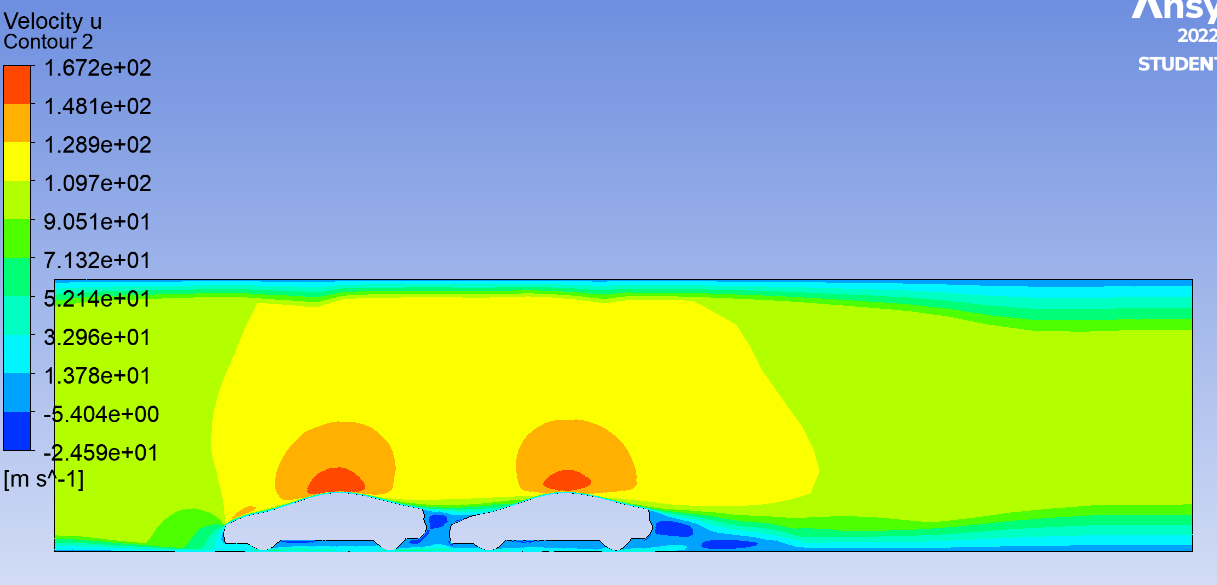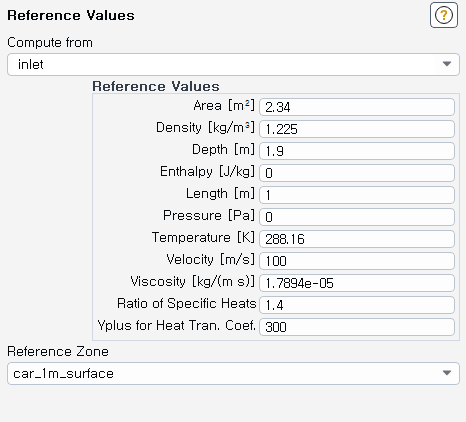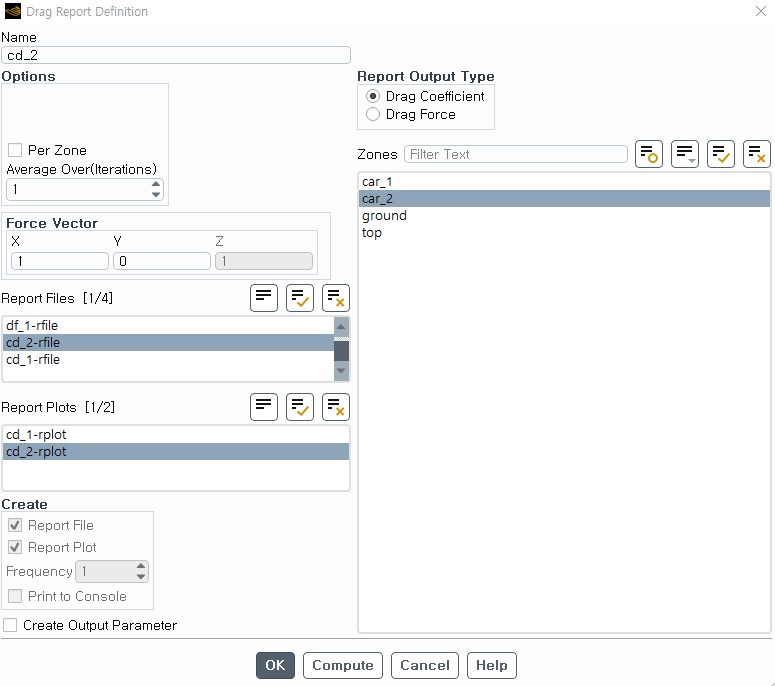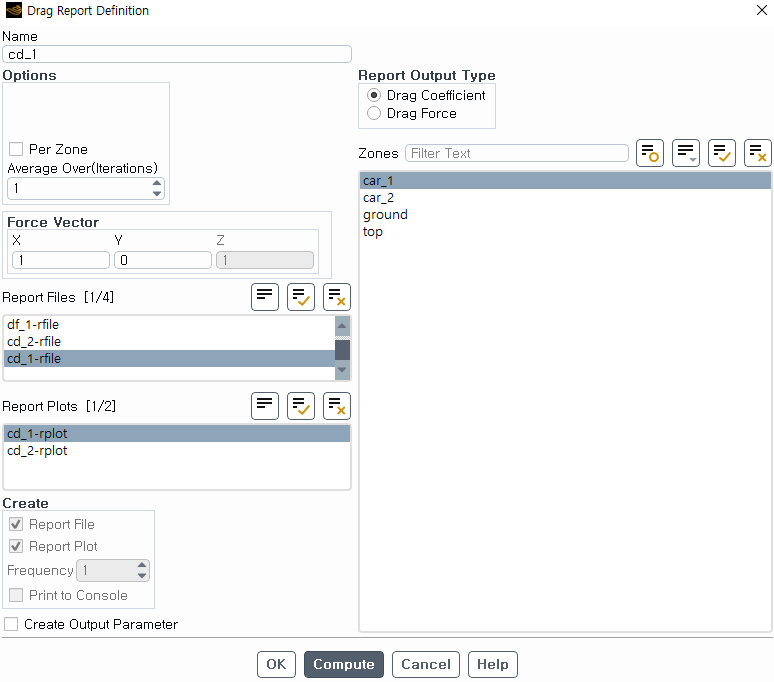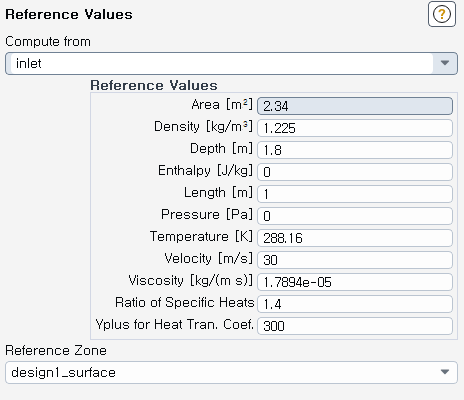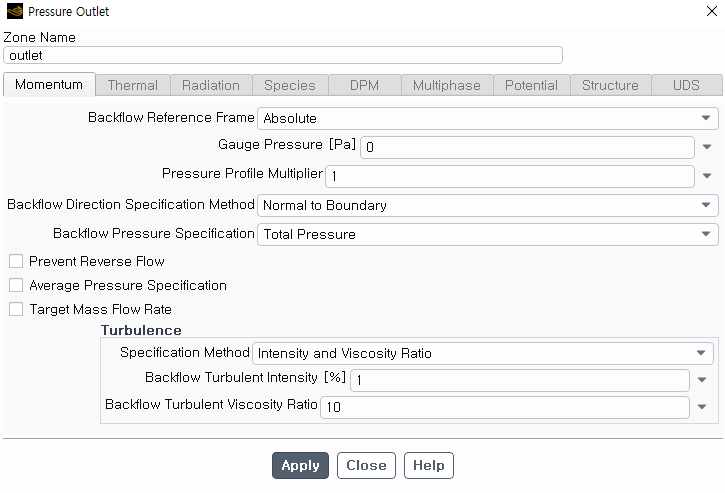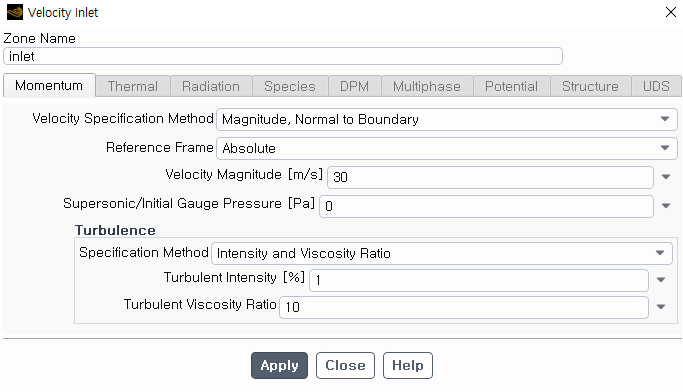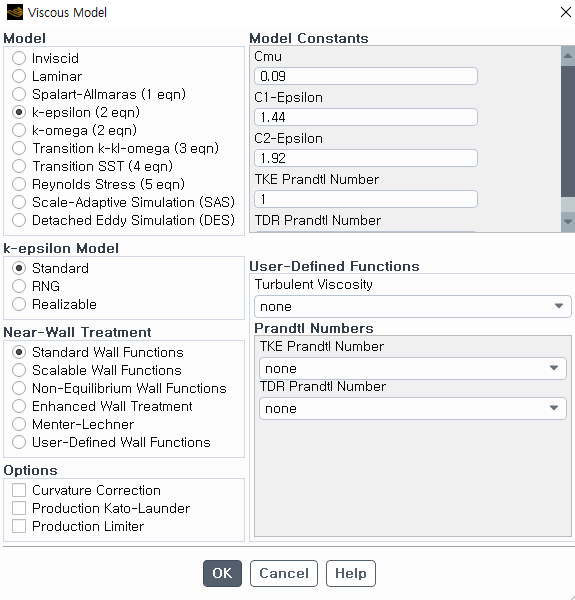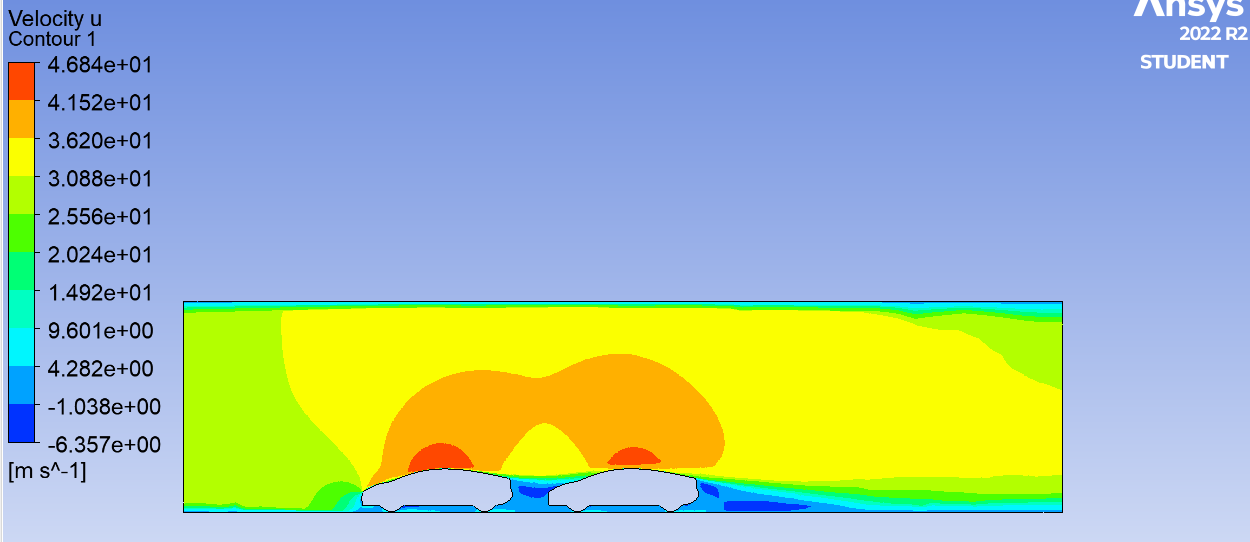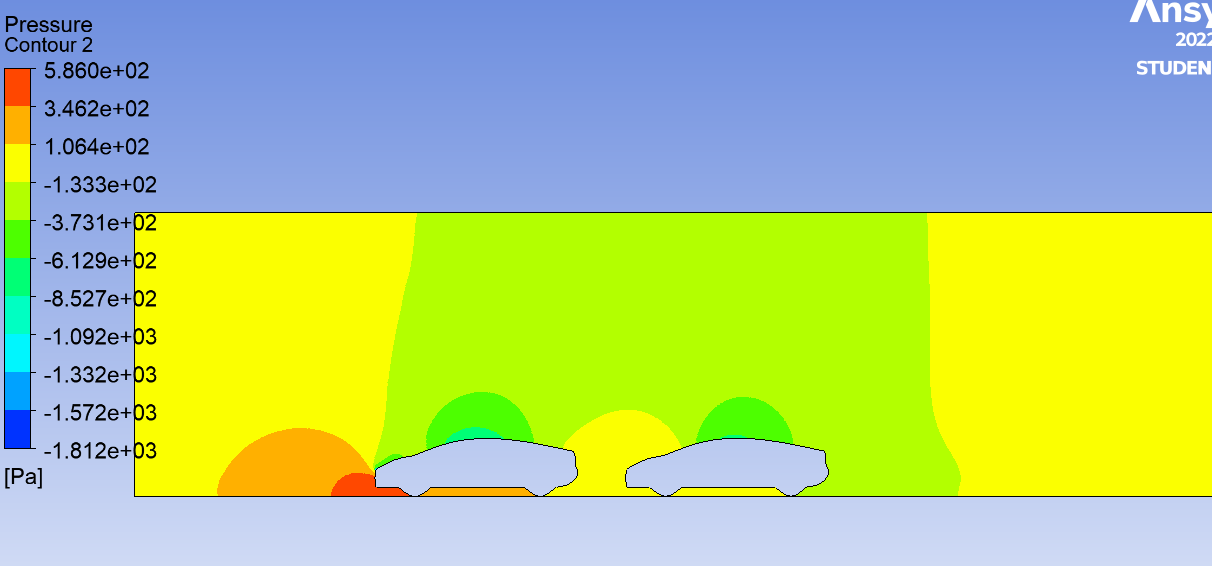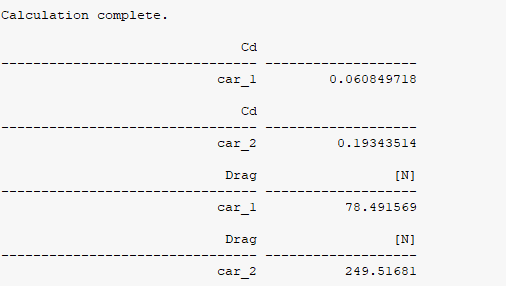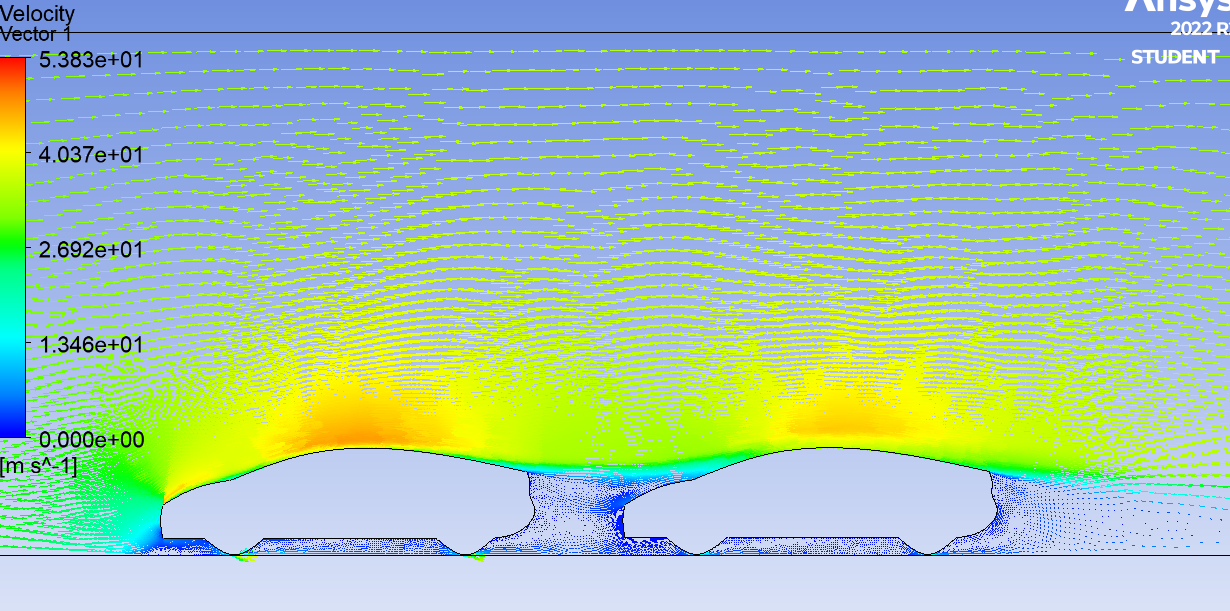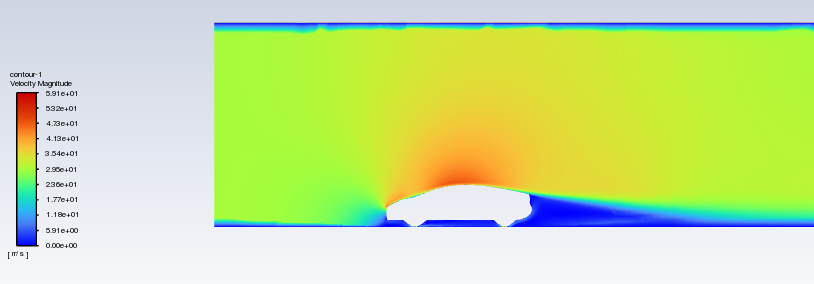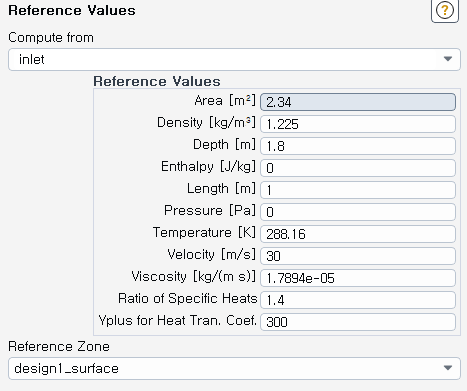-
-
May 4, 2023 at 10:28 am
-
May 4, 2023 at 12:21 pm
Rob
Forum ModeratorAssuming you labelled the cars correctly, can you check the forces (not coefficients) on the two surfaces? How well converged is the model? Is 167m/s sensible given the inlet condition? I suggest reading up on wind tunnel blockage recommendations too.
-
May 4, 2023 at 12:26 pm
Lee Chang Hun
Subscriberall right. But is it correct to calculate the drag coefficient for two cars when two cars are used in a 2d simulation? It is not accurate to find the drag coefficient in 2d, so should I do it in 3d? -
May 4, 2023 at 1:30 pm
Rob
Forum ModeratorYou will find the drag based on the 2d shape and flow field. For a car is that accurate? Possibly not, but is the goal to show you know how to do this or to obtain precise results for a design study?
-
May 4, 2023 at 1:44 pm
Lee Chang Hun
SubscriberFor a school project, I am conducting a 2D fluid analysis of the drafting effect in car racing and comparing the drag coefficients between the front and rear cars. I designed two identical cars and simulated the airflow to observe the drag coefficient. Theoretically, the drag coefficient of the rear car should be lower than that of the front car, but I am not getting the expected results, so I am asking for assistance.
-
May 4, 2023 at 1:53 pm
Rob
Forum ModeratorOK, so 2d is fine.
Look at the drag force on each car. How do they look? Also review the domain height and sky boundary condition. Is it reasonable to see that level of acceleration in the flow over the car?
-
May 4, 2023 at 2:06 pm
Lee Chang Hun
SubscriberSure, I will check the domain. Also, if we assume the car's height as 1.3m, width as 1.8m, and length as 4.5m as the reference values, the area would be (1.3*1.8) m^2, and I need to set the depth as 1.8m and length as 4.5m, correct? I am wondering if I should set the reference values differently for the front and rear cars if they are different.
-
May 4, 2023 at 2:15 pm
Rob
Forum ModeratorHave a look at the NACA example/tutorial in the Help system as that'll explain what needs altering for lift & drag.
-
May 5, 2023 at 2:44 am
Lee Chang Hun
SubscriberI changed the inlet velocity to 25m/s and the solution method from simple to coupled in the initial settings. I did not change any other settings, but I achieved the desired drag coefficient to some extent. Does the initial velocity and method affect the results? Also, there is a suggestion to set the length in the reference value as 1m instead of the car's actual length of 4.3m. Why is that recommended?
-
May 5, 2023 at 8:16 am
Rob
Forum ModeratorInitial velocity won't have much effect, assuming the model converges. Boundary condition will as it'll change the overall flow rates.
Check what "length" is used for. The reference values are there to tune the coefficients to whatever you're comparing to. Hence my comments on checking the actual forces. We see many questions on here where lift & drag coefficients are not as expected, and for well meshed & converged models it's almost always poor usage of the reference values.
In 2d the model depth is (default) 1m. In theory you can change this via the reference values but it's not recommended.
-
May 5, 2023 at 8:49 am
Lee Chang Hun
SubscriberI understand. However, I want to examine the drag coefficients at different distances between the cars. When the distance between the cars is 1m, I obtained the drag coefficients that seem appropriate for both cars' bodies. But when I kept the domain and the front car's position the same and only changed the distance between the cars to 2m for the simulation with the same settings, I found that the drag coefficient of the front car decreased from around 0.4 to 0.06, and the drag coefficient of the rear car became larger than the front car's coefficient. If the domain size and the front car's position are the same, the drag coefficient of the front car should remain the same, so I'm not sure why it changed.
-
May 5, 2023 at 9:28 am
Rob
Forum ModeratorDomain size may have an effect: how uniform is the flow downstream? Similarly look at the flow above the cars. There's a reason I suggested reading the wind tunnel guidelines.
You may also want to look up some of the work Bert Blocken has done with cycling using Ansys Fluent.
-
May 5, 2023 at 11:12 am
Lee Chang Hun
Subscriber -
May 5, 2023 at 11:24 am
Rob
Forum ModeratorReport the drag force: how does that look?
I'd question k-e for this type of work, along with near wall mesh resolution but that shouldn't give too great an error. Have a look at the airfoil/aerofoil example/tutorial for setting guidance.
For the domain size. Run the model and look at both pressure & velocity contours and velocity vectors. How sensible is the flow, and how does the "sky" interact with the car(s)?
-
May 5, 2023 at 11:37 am
Lee Chang Hun
SubscriberBased on the results shown, the velocity distribution indicates that the front of the rear car is slower than the front car, which should result in less drag and a lower drag coefficient for the rear car. This is consistent with what we see in racing, where the trailing car experiences a drag advantage. However, my drag coefficient and drag force results appear to be the opposite of what would be expected based on this reasoning.
-
May 5, 2023 at 12:32 pm
Rob
Forum ModeratorNot sure. The set up looks OK, and nothing silly in the results. I'm not sure about the high speed flow under the first car's wheels but I don't know how much of an effect that will have.
-
May 5, 2023 at 12:42 pm
Lee Chang Hun
SubscriberIt is possible that when there are two cars, the reference values become ambiguous and the desired values do not come out correctly. The reference zone of the reference value is based on a certain criterion and it was mentioned that it gives relative values. When there is only one car, the simulation seems to give the desired values correctly.
-
May 5, 2023 at 1:33 pm
Lee Chang Hun
SubscriberIf the drag coefficient values for the front and rear cars are swapped, then it would lead to credible results. However, it's difficult to determine whether the values were swapped or not without further analysis.
-
- The topic ‘How to find the drag coefficient when there are two bodies in Ansys 2d simulatio’ is closed to new replies.


- air flow in and out of computer case
- Varying Bond model parameters to mimic soil particle cohesion/stiction
- Eroded Mass due to Erosion of Soil Particles by Fluids
- I am doing a corona simulation. But particles are not spreading.
- Centrifugal Fan Analysis for Determination of Characteristic Curve
- Guidance needed for Conjugate Heat Transfer Analysis for a 3s3p Li-ion Battery
- Issue to compile a UDF in ANSYS Fluent
- JACOBI Convergence Issue in ANSYS AQWA
- affinity not set
- Resuming SAG Mill Simulation with New Particle Batch in Rocky

-
4067
-
1487
-
1308
-
1156
-
1021

© 2025 Copyright ANSYS, Inc. All rights reserved.

